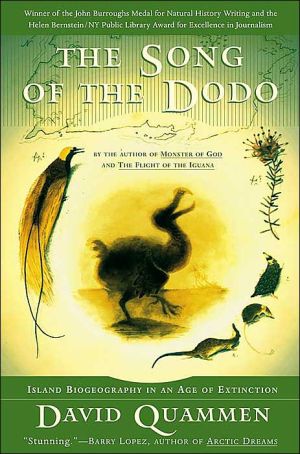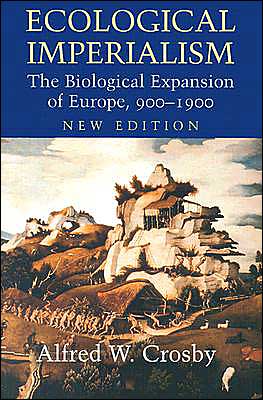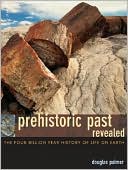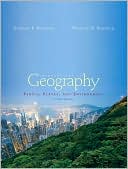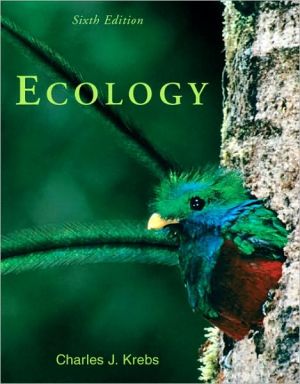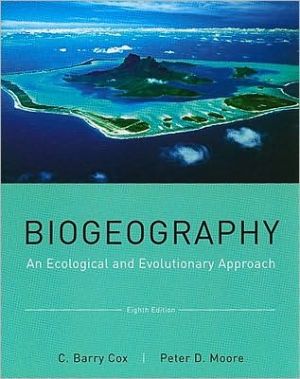The Song of the Dodo: Island Biogeography in an Age of Extinctions
David Quammen's book, The Song of the Dodo, is a brilliant, stirring work, breathtaking in its scope, far-reaching in its message — a crucial book in precarious times, which radically alters the way in which we understand the natural world and our place in that world. It's also a book full of entertainment and wonders.\ In The Song of the Dodo, we follow Quammen's keen intellect through the ideas, theories, and experiments of prominent naturalists of the last two centuries. We trail after him...
Search in google:
David Quammen's book, The Song of the Dodo, is a brilliant, stirring work, breathtaking in its scope, far-reaching in its message — a crucial book in precarious times, which radically alters the way in which we understand the natural world and our place in that world. It's also a book full of entertainment and wonders. In The Song of the Dodo, we follow Quammen's keen intellect through the ideas, theories, and experiments of prominent naturalists of the last two centuries. We trail after him as he travels the world, tracking the subject of island biogeography, which encompasses nothing less than the study of the origin and extinction of all species. Why is this island idea so important? Because islands are where species most commonly go extinct — and because, as Quammen points out, we live in an age when all of Earth's landscapes are being chopped into island-like fragments by human activity. Through his eyes, we glimpse the nature of evolution and extinction, and in so doing come to understand the monumental diversity of our planet, and the importance of preserving its wild landscapes, animals, and plants. We also meet some fascinating human characters. By the book's end we are wiser, and more deeply concerned, but Quammen leaves us with a message of excitement and hope. Edward Neuert In the annals of science there are many instances of pure, unleavened bad luck thwarting a researcher's best efforts. But there may be no more heartrending occurrence than that which befell naturalist Alfred Russel Wallace, in August of 1852, aboard the ship Helen. For four years Wallace had slogged through the mud, swollen rivers and mosquitoes of the Amazon basin, assembling a huge collection of exotic fauna. Then, in the middle of the Atlantic on his return voyage, the ship's other cargo of balsam resin spontaneously combusted. Wallace escaped to a lifeboat, and watched every pickled bird and dried butterfly go up in flames. He whiled away his time sketching dolphins and seabirds before being rescued. And, as David Quammen notes in The Song of the Dodo, something important came of this tragedy: the wreck of the Helen forced Wallace back out into the field to the Malay archipelago where, simultaneously with Darwin, he developed the theory of evolution. Don't let Quammen's subtitle -- "Island Biogeography in an Age of Extinctions" -- scare you off. Yes, this is a big book, over 700 pages, and it deals with big science. But it's filled with stories of inquisitive humans like Wallace who, almost by chance, have drawn a complex picture of where species come from, and some frightening speculation about they are headed. Quammen's book, put most simply, is a study of the distribution of life on islands. Because, as Quammen notes, "Isolation plus time yields divergence," islands by their geographical isolation have served to "give clarity to evolution." Nineteenth century naturalists like Wallace and Darwin were drawn to islands not only because of the giant tortoises, lizards and flightless birds that lived there, but because all that gigantism seemed to offer clues to the mystery of evolution in large, easy-to-read letters. Quammen has spent the last 10 years following modern island biogeographers around the globe, and he makes their work accessible to the lay reader. Most important, though, is his contention that we have, in effect, developed the modern world into a series of biological islands, and have inevitably upped the threat of extinction by doing so. The Song of the Dodo could easily have been a hundred pages shorter, but Quammen's easygoing style, which readers may be familiar with from his columns in Outside magazine, makes the effort worthwhile. This book is a complicated and charming scientific history: a rare species indeed. -- Salon
Chapter 1\ THIRTY-SIX PERSIAN THROW RUGS\ Let's start indoors. Let's start by imagining a fine Persian carpet and a hunting knife. The carpet is twelve feet by eighteen, say. That gives us 216 square feet of continuous woven material. Is the knife razor-sharp? If not, we hone it. We set about cutting the carpet into thirty-six equal pieces, each one a rectangle, two feet by three. Never mind the hardwood floor. The severing fibers release small tweaky noises, like the muted yelps of outraged Persian weavers. Never mind the weavers. When we're finished cutting, we measure the individual pieces, total them up — and find that, lo, there's still nearly 216 square feet of recognizably carpetlike stuff. But what does it amount to? Have we got thirty-six nice Persian throw rugs? No. All we're left with is three dozen ragged fragments, each one worthless and commencing to come apart.\ Now take the same logic outdoors and it begins to explain why the tiger, Panthera tigris, has disappeared from the island of Bali. It casts light on the fact that the red fox, Vulpes vulpes, is missing from Bryce Canyon National Park. It suggests why the jaguar, the puma, and forty-five species of birds have been extirpated from a place called Barro Colorado Island — and why myriad other creatures are mysteriously absent from myriad other sites. An ecosystem is a tapestry of species and relationships. Chop away a section, isolate that section, and there arises the problem of unraveling.\ For the past thirty years, professional ecologists have been murmuring about the phenomenon of unraveling ecosystems. Many of these scientists have become mesmerized by the phenomenon and, increasingly with time, worried. They have tried to study it in the field, using mist nets and bird bands, box traps and radio collars, ketamine, methyl bromide, formalin, tweezers. They have tried to predict its course, using elaborate abstractions played out on their computers. A few have blanched at what they saw — or thought they saw — coming. They have disagreed with their colleagues about particulars, arguing fiercely in the scientific journals. Some have issued alarms, directed at governments or the general public, but those alarms have been broadly worded to spare nonscientific audiences the intricate, persuasive details. Others have rebutted the alarmism or, in some cases, issued converse alarms. Mainly these scientists have been talking to one another.\ They have invented terms for this phenomenon of unraveling ecosystems. Relaxation to equilibrium is one, probably the most euphemistic. In a similar sense your body, with its complicated organization, its apparent defiance of entropy, will relax toward equilibrium in the grave. Faunal collapse is another. But that one fails to encompass the category of floral collapse, which is also at issue. Thomas E. Lovejoy, a tropical ecologist at the Smithsonian Institution, has earned the right to coin his own term. Lovejoy's is ecosystem decay.\ His metaphor is more scientific in tone than mine of the sliced-apart Persian carpet. What he means is that an ecosystem — under certain specifiable conditions — loses diversity the way a mass of uranium sheds neutrons. Plink, plink, plink, extinctions occur, steadily but without any evident cause. Species disappear. Whole categories of plants and animals vanish. What are the specifiable conditions? I'll describe them in the course of this book. I'll also lay siege to the illusion that ecosystem decay happens without cause.\ Lovejoy's term is loaded with historical resonance. Think of radioactive decay back in the innocent early years of this century, before Hiroshima, before Alamogordo, before Hahn and Strassmann discovered nuclear fission. Radioactive decay, in those years, was just an intriguing phenomenon known to a handful of physicists — the young Robert Oppenheimer, for one. Likewise, until recently, with ecosystem decay. While the scientists have murmured, the general public has heard almost nothing. Faunal collapse? Relaxation to equilibrium? Even well-informed people with some fondness for the natural world have remained unaware that any such dark new idea is forcing itself on the world.\ What about you? Maybe you have read something, and maybe cared, about the extinction of species. Passenger pigeon, great auk, Steller's sea cow, Schomburgk's deer, sea mink, Antarctic wolf, Carolina parakeet: all gone. Maybe you know that human proliferation on this planet, and our voracious consumption of resources, and our large-scale transformations of landscape, are causing a cataclysm of extinctions that bodes to be the worst such event since the fall of the dinosaurs. Maybe you are aware, with distant but genuine regret, of the destruction of tropical forests. Maybe you know that the mountain gorilla, the California condor, and the Florida panther are tottering on the threshold of extinction. Maybe you even know that the grizzly bear population of Yellowstone National Park faces a tenuous future. Maybe you stand among those well-informed people for whom the notion of catastrophic worldwide losses of biological diversity is a serious concern. Chances are, still, that you lack a few crucial pieces of the full picture.\ Chances are that you haven't caught wind of these scientific murmurs about ecosystem decay. Chances are that you know little or nothing about a seemingly marginal field called island biogeography.\ Copyright © 1996 by David Quammen
CONTENTSI Thirty-Six Persian Throw RugsII The Man Who Knew IslandsIII So Huge a BignesIV Rarity unto DeathV Preston's BellVI The Coming ThingVII The Hedgehog of the AmazonVII The Song of the IndriIX World in PiecesX Message from AruGLOSSARYAUTHOR'S NOTEACKNOWLEDGMENTSSOURCE NOTESBIBLIOGRAPHYINDEX
\ Edward NeuertIn the annals of science there are many instances of pure, unleavened bad luck thwarting a researcher's best efforts. But there may be no more heartrending occurrence than that which befell naturalist Alfred Russel Wallace, in August of 1852, aboard the ship Helen. For four years Wallace had slogged through the mud, swollen rivers and mosquitoes of the Amazon basin, assembling a huge collection of exotic fauna. Then, in the middle of the Atlantic on his return voyage, the ship's other cargo of balsam resin spontaneously combusted. Wallace escaped to a lifeboat, and watched every pickled bird and dried butterfly go up in flames. He whiled away his time sketching dolphins and seabirds before being rescued. And, as David Quammen notes in The Song of the Dodo, something important came of this tragedy: the wreck of the Helen forced Wallace back out into the field to the Malay archipelago where, simultaneously with Darwin, he developed the theory of evolution.\ Don't let Quammen's subtitle -- "Island Biogeography in an Age of Extinctions" -- scare you off. Yes, this is a big book, over 700 pages, and it deals with big science. But it's filled with stories of inquisitive humans like Wallace who, almost by chance, have drawn a complex picture of where species come from, and some frightening speculation about they are headed.\ Quammen's book, put most simply, is a study of the distribution of life on islands. Because, as Quammen notes, "Isolation plus time yields divergence," islands by their geographical isolation have served to "give clarity to evolution." Nineteenth century naturalists like Wallace and Darwin were drawn to islands not only because of the giant tortoises, lizards and flightless birds that lived there, but because all that gigantism seemed to offer clues to the mystery of evolution in large, easy-to-read letters.\ Quammen has spent the last 10 years following modern island biogeographers around the globe, and he makes their work accessible to the lay reader. Most important, though, is his contention that we have, in effect, developed the modern world into a series of biological islands, and have inevitably upped the threat of extinction by doing so. The Song of the Dodo could easily have been a hundred pages shorter, but Quammen's easygoing style, which readers may be familiar with from his columns in Outside magazine, makes the effort worthwhile. This book is a complicated and charming scientific history: a rare species indeed. -- Salon\ \ \ \ \ \ Publishers Weekly - Publisher's Weekly\ Quammen (Natural Acts) has successfully mixed genres in this highly impressive and thoroughly enjoyable work. The scientific journalism is first-rate, with the extremely technical field of island biogeography made fully accessible. We learn how the discipline developed and how it has changed conservation biology. And we learn just how critical this field is in the face of massive habitat destruction. The book is also a splendid example of natural history writing, for which Quammen traveled extensively. The Channel Islands off California and the Madagascan lemurs are captivatingly portrayed. Equally impressive are the character studies of the scientists who have been at the forefront of island biogeography. From his extended historical analysis of the journeys and insights of 19th-century biologist Alfred Russell Wallace to his field and laboratory interviews with many of the men and women who have followed in Wallace's intellectual wake, Quammen delightfully adds the human dimension to his discussion of science and natural history. Using a canvas as large as the world, he masterfully melds anecdotes about swimming elephants, collecting fresh feces from arboreal primates in Brazil and searching for the greater bird of paradise on the tiny island of Aru into an irreverent masterpiece. That a book on so technical a subject could be so enlightening, humorous and engaging is an extraordinary achievement. Author tour. (Apr.)\ \ \ Library JournalThe self-contained ecosystem is again used as a benchmark in this study of evolution and extinction by the author of Natural Acts (LJ 3/15/85).\ \ \ \ \ BooknewsA captivating work of scientific journalism which explains the worldwide ecosystem decay which is at the root of countless species' extinction and which will continue to wipe out species as human activity carves the wilderness into ever-increasing island-like fragments. Annotation c. Book News, Inc., Portland, OR (booknews.com)\ \ \ \ \ Kirkus ReviewsEverything you might want to know about life and death on islands here, there, and everywhere on the globe can be found in Quammen's study of island biogeography.\ The National Magazine Awardwinning science writer (Outside magazine; The Flight of the Iguana, 1988, etc.) asks, Why does island life differ radically from mainland life? The answer, not surprisingly, is evolution. There are unique evolutionary opportunities as well as pressures on islands. On oceanic islands, which arise from deep sea eruptions (such as the Galápagos Islands), there may be fewer varieties of species; the first arrivals often expand to fill all sorts of ecological niches in a process called adaptive radiation. So it was with the varied populations of finches that Charles Darwin observed in the Galápagos. Islands that sit on continental shelves near enough to mainlands to have been connected by land bridges at times of major glaciation may have animal species as varied as those on the mainland, but the species are likely to differ in their behavior or appearance from mainland relatives. Some reptiles isolated on islands grew large, like the Komodo dragon of Indonesia; some mammals shrank, like the pygmy elephants found in Sicily. Some birds became flightless, like the celebrated dodo native to Mauritius. Quammen provides abundant examples of the variables that can foster or doom populations, ranging from the sheer size of an island (big is better), to bouts of bad weather, to the introduction of farming and the animal camp followers of man: pigs, rats, and cats. The book's virtues include Quammen's vivid account of his treks to the world's wild places and interviews with the experts he finds there. The downside is too much of a muchness; Quammen's zeal to spill all his notes and a breezy style that grows wearying.\ Taken in small bites, however, there is much to glean here about the wonders, and also the fragility, of life on earth.\ \ \ \ \ \ From Barnes & NobleThe author's globe-circling journey to islands from Madagascar to Guam shows why island biogeography--the study of the distribution of species on islands & islandlike patches of landscape--yields important insights into the origin & extinction of species everywhere.\ \
